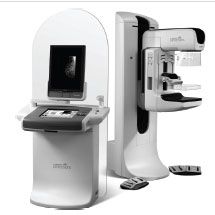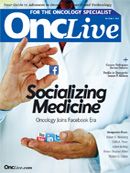Publication
Article
Oncology Live®
March 2011 OncLive Checkup
Author(s):
Editors' picks for this month's best Websites, news, resources, and online information for oncologists.

The first x-ray mammography device that provides 3-dimensional (3D) images of the breast has gained FDA approval. The agency said the Selenia Dimensions System, which uses the process of tomosynthesis, might help physicians more accurately detect and diagnose breast cancer.
Currently, about 10% of women screened with conventional 2-dimensional (2D) mammography undergo further testing for abnormalities that prove to be benign, the FDA said. The decision hinged partly on 2 studies where radiologists reviewed 2D and 3D images from >300 mammograms. The 3D images resulted in a 7% improvement in the radiologists’ ability to distinguish between cancerous and benign cases.
The Selenia Dimensions System is a flexible platform that can be used as an add-on to a traditional digital mammography system, with the ability to move between imaging modes, according to the manufacturer, Hologic, Inc, headquartered in Bedford, Massachusetts. For further information, visit the FDA at http://tiny.cc/7ok9f or the company site at http://tiny.cc/f89am.
Safety Questions Delay Chemosaturation Filing
The FDA has refused to file a new drug application (NDA) for a much-anticipated technology designed to deliver chemotherapeutic agents to metastatic liver cancer patients through direct hepatic arterial infusion, according to the company developing the system. Delcath Systems, Inc said the agency is seeking information on manufacturing plant operations and safety data that the company already was planning to submit in April. The company intends to resubmit its NDA by September 30. Meanwhile, Delcath expects to launch the system in Europe during the second half of the year.
Making the Case for Avastin
The question of whether Avastin (bevacizumab) should remain an approved drug for metastatic breast cancer (MBC) will be aired on June 28-29. Genentech, a member of the Roche Group, said the FDA granted its request for a hearing opposing the agency’s plan to remove the indication from the label. Pending a final FDA decision, Avastin remains an approved use in combination with paclitaxel for the first-line treatment of HER2-negative MBC.
Priority Review Granted for Lymphoma Drug
Istodax (romidepsin) for injection will be evaluated through a priority review as a treatment for peripheral T-cell lymphoma patients who have received at least 1 prior therapy. Celgene Corporation expects an FDA decision by June 17. The supplemental NDA, if approved, would extend the use of the drug beyond its current indication in certain cutaneous T-cell lymphoma patients. Istodax is a histone deacetylase inhibitor that induces cell cycle arrest and apoptosis of some cancer cell lines, according to Celgene.
Brentuximab Biologics Application Filed
Seattle Genetics, Inc has filed with the FDA for a priority review of its biologics license application for brentuximab vedotin for the treatment of relapsed or refractory Hodgkin lymphoma and systemic anaplastic large cell lymphoma. The company said the FDA has 6 months to take action on the application. Brentuximab is an antibody drug conjugate that employs a novel system for targeting CD30-expressing tumor cells.
Additional Study in Works for Bioequivalent Drug
Adventrx Pharmaceuticals, Inc said it is developing the protocol for an additional clinical study of ANX-514, its polysorbate 80-free formulation of docetaxel, after the FDA determined the drug could not be approved based on the bioequivalence submission. The San Diego, California, company said the agency found that the data from Study 514-01 did not support the conclusion that ANX-514 would deliver clinical outcomes comparable to Taxotere, a sanofi - aventis drug indicated for treating certain breast, non-small cell lung, prostate, gastric, and head and neck cancers.
Generic Lung Cancer Drug Introduced
Hospira, Inc has received the FDA’s permission to market a generic version of Hycamtin (topotecan hydrochloride) for injection as a treatment for small cell lung cancer after failure of first-line chemotherapy. The Lake Forest, Illinois, company said the drug would be marketed as a solution formulation with a concentration of 4 mg/4 mL.










